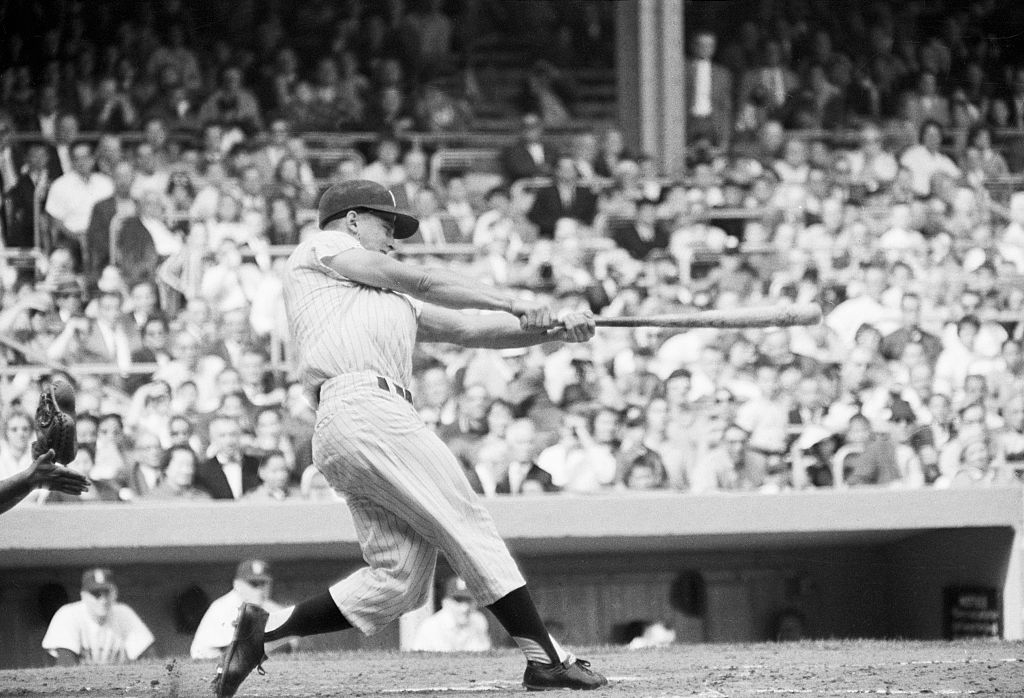
Roger Maris Was Terrified and Tormented During Home Run Record Chase
Today, Roger Maris is recognized as the baseball player whose home run record was surpassed by Mark McGwire and Sammy Sosa during the 1998 season. Back in 1961, when Maris set the record, he was viewed by many as undeserving of achieving such a lofty record. Needless to say, that season was not an enjoyable experience for the New York Yankees outfielder. In fact, it became both a terrifying and painful existence for Maris.
Roger Maris’ early career
Roger Maris made his MLB debut on April 16, 1957 with the Cleveland Indians. Two days later, Maris displayed his power hitting the first home run of his career, a grand slam against the Detroit Tigers. He finished his rookie season with 14 home runs.
Maris was traded to the Kansas City Athletics during his second season. He stayed in Kansas City for a couple of seasons before he was traded to the New York Yankees before the 1960 season. Maris made a good first impression in his New York debut, hitting a single and a double, and belting in a pair of home runs.
That year Maris finished with a .283 average and blasted 39 home runs. He also led the American League in RBIs at 112, and extra-base hits with 64. For his efforts, he earned the AL MVP and won a Gold Glove Award for his fielding.
The 1961 season
The 1961 season was a year of change for baseball. The AL expanded from eight to 10 teams with the addition of the Los Angeles Angels and Washington Senators. Both new teams drafted their players from the other AL squad. The perceived result was watered-down rosters for most of the teams because there were now players in the AL who would otherwise be playing in AAA. To maintain a balanced schedule, AL owners extended the season from 154 games to 162 games.
While Roger Maris had established himself as a star Yankees player that first season, the affable Mickey Mantle was still the fan-favorite after winning a couple of MVPs a few seasons before. Mantle and Maris started the season off displaying their power early and often. By mid-season, it looked like one or both players could potentially break the once-unbreakable Babe Ruth record of 60 home runs set 34 years earlier.
The media began pitting Mantle vs. Maris. For fans, it was an easy call to support the hero Mantle over the new guy. To add to the already-building tension, baseball commissioner Ford Frick, who had been a good friend of Ruth’s, announced that unless Ruth’s mark was surpassed in the first 154 games, the new record should be shown with an asterisk, indicating the achievement occurred in a 162-game season. Interestingly, MLB had no direct control over any record books until years later.
Roger Maris passes Babe Ruth’s record
As the season winded down, Mantle got sick, was hospitalized, and eliminated from the home run race. Roger Maris pushed forward those final weeks but did so with trepidation. He lived in fear every day as he was regularly the subject of death threats. It got so bad the Yankees hired NYPD detective Kieran Burke as his personal protector. Burke followed Maris everywhere.
The combination of stress and fear became so bad that clumps of Maris’s hair began to fall out. Despite all the obstacles before him, Maris continued hitting home runs. After 154 games and Frick’s regular-season “deadline,” Maris stood at 59 home runs.
On October 6, 1961, the last game of the season, Maris stepped up to the plate in the fourth inning and belted the record home run in front of a sparse crowd of just over 23,000 fans. Frick was not in attendance to recognize the record. In addition to the record, Maris won the AL MVP Award for a second straight year as the Yankees went on to capture the World Series over the Cincinnati Reds.
Roger Maris’s pain after the record
While Roger Maris was the official record holder for most home runs in a season, he was soured by the whole experience. Months of fans, media, and the commissioner making him feel undeserving, will do that to you.
Maris put up respectable numbers the following season and the rest of his career, but never came close to the home run production of 1961. In 1966, the Yankees traded him to the St. Louis Cardinals, where he played until he retired after the 1968 season.
Unfortunately, the pain of what he experienced in New York lasted long after he left. Yankees owner George Steinbrenner tried connecting with Maris for years. Maris refused. He finally agreed in 1978, but only after Steinbrenner agreed to donate sod for a baseball field where his kids played.
On April 14, 1978, Roger Maris returned to Yankees Stadium where he, along with Mantle, received a long overdue standing ovation. After years of hurt from an accomplishment that should have been celebrated when it happened years earlier, Maris finally received the recognition, and more importantly, the acceptance he wanted and deserved.



